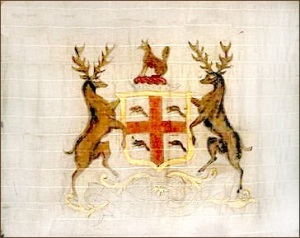Last week, three students in my Global Issues class organized a refugee simulation experience for our school as part of their Take Action Project. Muuxi Adam, a Somalian refugee and founding member of HumanKind International, had inspired them at a visit he made in January.

Muuxi Adam from HumanKind International sharing his personal experience with Grade 12 students.
The students began to make plans to host a refugee simulation to help bring attention to the dire needs of asylum seekers and specifically to the plight of refugees in the largest refugee camp in the world, Dadaab. (See the map below.)
Prior to the experience, however, our class began to research the global refugee crisis from historical and contemporary perspectives and many students chose the crisis as their topic for their major papers and Take Action Projects. In order to prepare and front load for this experience, we also participated in the Glassen Essay Contest which asked: What, if anything, should Canada do about the global refugee crisis?
In doing so, we had created a neural network that would help us properly engage in the primary experience — the simulation.
On April 29th, Muuxi , Grade 12 students, and several volunteers came to campus and designed a refugee experience that would take our learners on a journey that involved fleeing their homeland, a 6 KM march, an ambush by rebels, mind fields, and border crossings. You can see via the images and vines below to get a sense of what the experience was like.

Students grabbing what they can to flee their homelands

Students walking to the next safe place

Rebels rob the refugees

Land minds!

More walking

The border is up a head.

Confusion at the border

Refugees try to fill out paper work in other languages. Families are split apart.

Reflecting on the experience.

Muuxi and student organizers debrief with Grade 12 and 9 students.
https://vine.co/v/iPdKQOTHIgL/embed/simple https://vine.co/v/iPd2L7LP9Pe/embed/simple
The students were then provided time to think and write about their experience and communicate how their research informed the experience. Here is one of the student organizers speaking on CBC about his experience:
The experience was tremendously educative for all of us and it began with the curiosity of a few members of our learning community, priming the pump in terms of creating a pre-existing neural network, designing an exceptional primary experience, and then having the time and space to reflect on our learning. This experience now feeds into greater and deeper educative experiences.

Kolb’s Cycle of Experience
I would encourage all educators to invite Muuxi and Humankind international to organize a similar experience. It is critical for understanding the plight of our fellow species mates and developing empathy for all forms of life.


